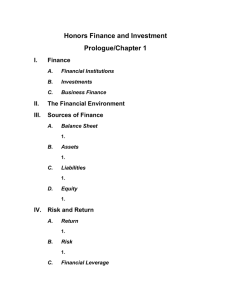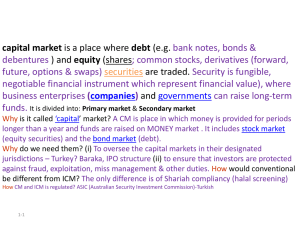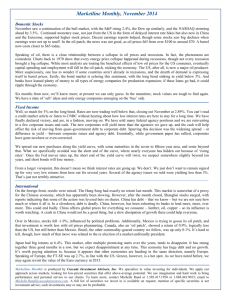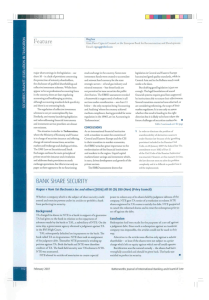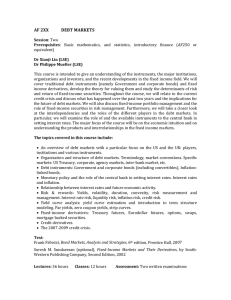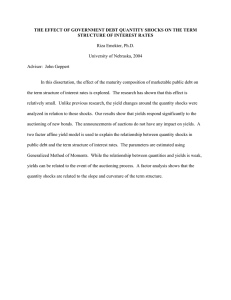Chapter 1 The Role of Financial Markets
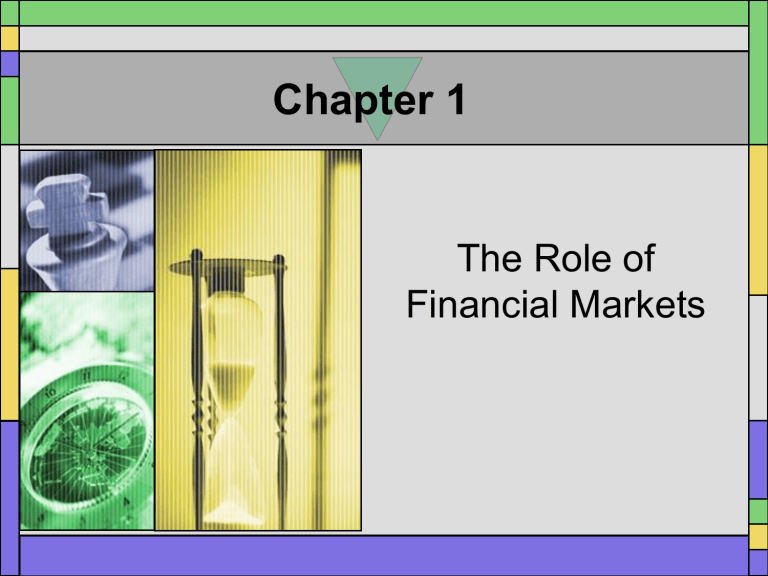
Chapter 1
The Role of
Financial Markets
Two Important Functions
Transfer funds from savers into investments.
Transfer title of ownership of existing securities from sellers to buyers.
Financial Markets and the Transfer of
Savings
“Spend a little, give a little, and save a little.”
What should I do with my savings?
– Put the funds in a bank
– Buy Stock
– Purchase shares in a mutual fund
What NOT to do with my savings
– Let the funds sit idle
• Idle funds do not earn a return
Financial Markets and the Transfer of
Savings
Financial Markets
• The most important function of the financial system is to provide the mechanism to transfer savings into productive uses such as investments.
• Another purpose is the creation of markets for trading in existing securities. Secondary
Markets do not transfer funds or create new assets, they transfer ownership of securities among investors.
Financial Markets and the Transfer of
Savings
Two basic methods for transferring funds.
– Direct Investment
• Start your own business and invest your savings in the operation.
• When securities are initially sold to investors in the “primary” market. New assets are created.
Financial Markets and the Transfer of
Savings
Two basic methods for transferring funds.
– Indirect Investment – (through a financial intermediary)
• You lend money to a bank (savings account)
• The bank lends the funds to a borrower
• Lending and borrowing is continuous
The Role of Money
Money – Anything that is generally accepted as a means of payment. A medium of exchange; its value is related to what it will purchase.
– Money also acts as a store of value from one time period to the next.
Liquidity-Ease of converting an asset into cash without loss (short term debt obligations)
Marketable – may be bought and sold, but you could sustain a loss. (stocks and bonds)
The Role of Money
Although the Federal Reserve has control over the supply of money, most of the money supply is produced through the creation of loans by the banking system.
The Role of Money Supply
Money Supply – Total amount of money in circulation
M-1 – Sum of coins, currency, and demand deposits
M-2 – M1 plus savings accounts, and small certificates of deposit (CD’s)
M-2 is not affected by shifting funds between checking and savings accounts
The Role of Interest Rates
Interest – is the cost of credit: it is the price paid for the use of someone else’s money. The rate of interest is often expressed as a percentage.
Interest Rates help allocate scarce credit
Short-term debt – less than 1 year the
“Money market”
Long-term debt – the “Capital market”
Structure of Yields
Term Structure of interest rates –
Relationship between yields and the time to maturity for debt with a given level of risk.
Yield curve – Graph relating interest rates and the term to maturity.
Generally, long-term debt implies higher rates (positively sloped yield curve).
Time and Yields
Positively sloped yield curve
Time and Yields
Negatively sloped yield curve
Determinants of Interest Rates
Preference for shorter term – interest is an incentive to postpone spending.
Other factors:
– Risk associated with the borrower
– Liquidity or Marketability
– Expected of inflation
– Expected of future rates
– Monetary Policy of the Federal Reserve
